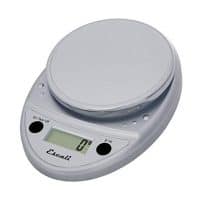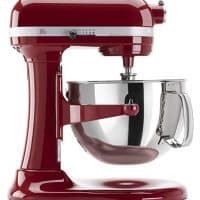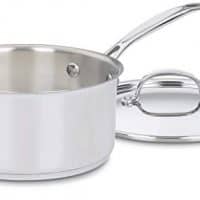Let me show you how to use the tangzhong method to make tangzhong bread, a super soft bread that stays that way for days and is quite possibly the most perfect sandwich bread ever.
Another way to make bread that has great keeping properties is to make potato bread, so you might want to check that out as well.
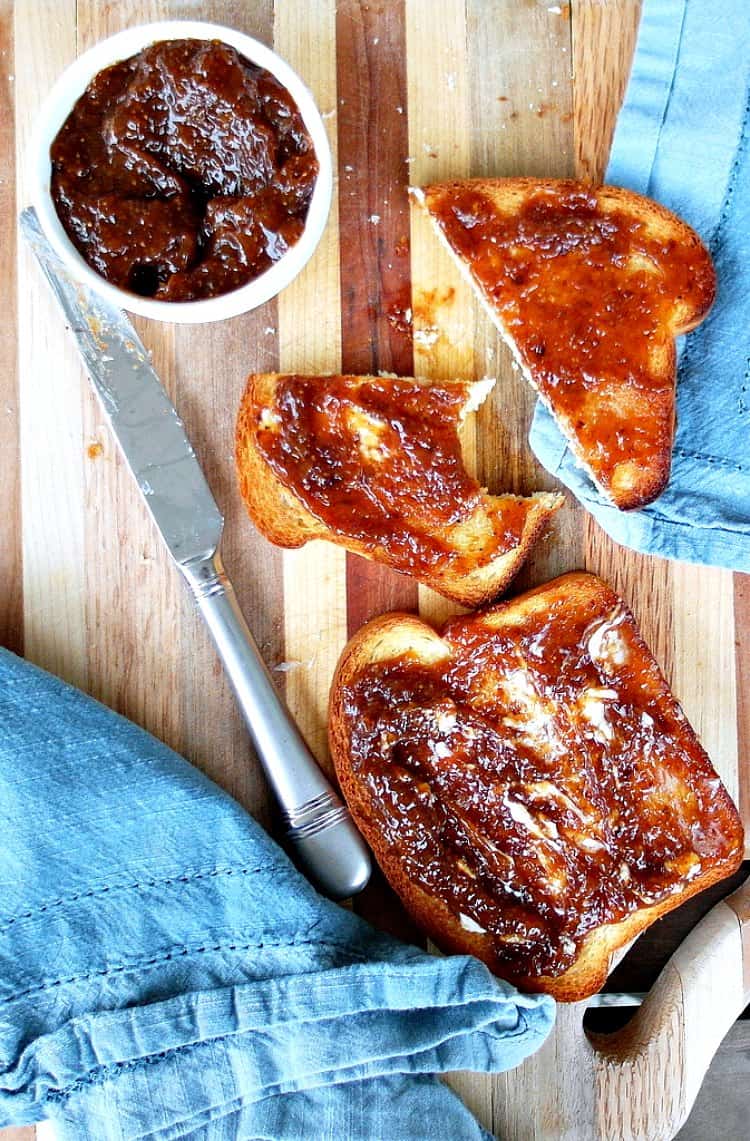
Bread That Keeps Really Well
If you are a fan of soft, springy sandwich bread, I’m pretty sure you can’t beat the Tangzhong method.
I am by no means an expert, but I’ve baked four loaves so far, I have had excellent luck keeping the bread out on the counter (in a zip top bag) for up to 5 days of softness!
Five days, people. After five days at room temperature, most—probably all—homemade “Western-style” breads would be good for nothing but making croutons.
The Tangzhong Method
In some ways, I feel I’m late to the Tangzhong (or Tang Zhong as I’ve sometimes seen it written) method of making bread.
To say that Tangzhong is new would be incorrect.
Tangzhong, or water roux, is a Japanese technique that was popularized in Asian countries by a Chinese cook book author Yvonne Chen in a book called the 65°C Bread Doctor.
The book itself was published in 2007, although the method must certainly have been used in Japan for quite some time. I cannot find any reference to when this method first was used.
Once I read about the method, I knew I wanted to try it. I put it forth on twitter that I was going to give it a go. The supremely talented Stella, of BraveTart, told me that she had used the method, which she learned in a Japanese bakery in Kentucky believe it or not, to develop a very special “kid bread” for her upcoming cookbook.
Incidentally, you can now grab a copy of the fantastic BraveTart: Iconic American Desserts at your favorite book store or through Amazon where you’ll find her recipe for “Wonder Bread” along with the best chocolate chip cookies anywhere.
Stella graciously allowed me to play with her formula, and as it baked the whole kitchen smelled like kid bread heaven.
And my first taste? Oh, my! Moist, subtly sweet with a hint of milk, wonderful bread positively screaming for butter and jam or peanut butter and jelly.
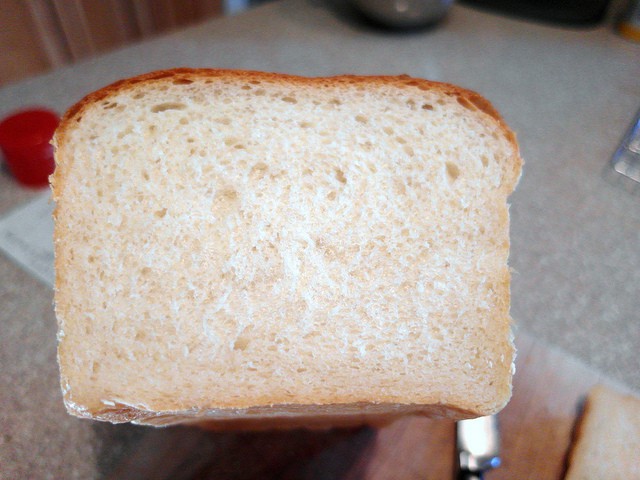
I made Stella’s bread twice. You know, just to make sure that I really, really loved it. And yes, I did. I do.
But I do like to play as well. So I decided to march off on my own and see how a traditional French sandwich loaf—pain au lait, or milk bread—would fare using the Tangzhong method.
What is Tangzhong?
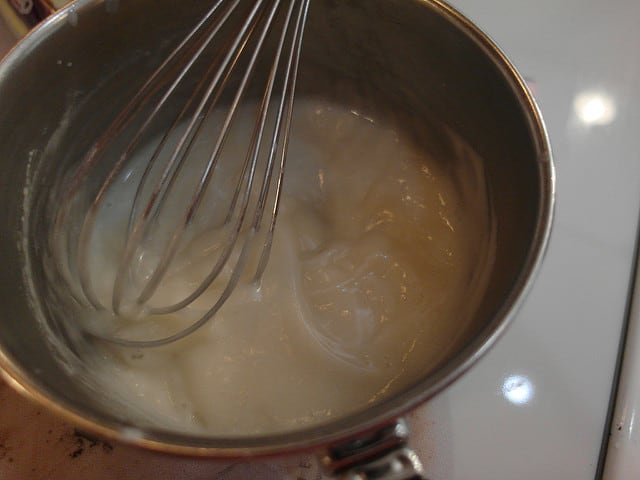
Tangzhong, or water roux, is a mixture of 1 part flour to 5 parts water, by weight, that you stir and cook until the starches in the flour gelatinize and the mixture thickens. This magically happens at 150°F, or 65°C. After covering and cooling to warm, you simply add this tangzhong into your recipe.
Because the Tangzhong is made up of both flour and water, the two most abundant ingredients in bread making, it is added in place of a portion of the flour and water in your formula, not in addition to.
So, how much of the total amount of flour in your formula (bread recipe) should be used in the tangzhong?
I found this very helpful post by Rose of Simply a Food Blog. She gives a range of between 5 and 10% of the total weight of the flour (although Shoon Yin’s post, referenced below, suggest 11-12%).
Once you’ve settled on the amount of flour, simply multiply the weight of the flour by five, and that’s the amount of water you’ll need. Easy.
How To Do The Math
Let’s say your original recipe calls for 10 oz of flour (for easy math purposes) and 7 oz of water and you want to substitute tangzhong for 10% (again, for easy math purposes) of the total weight of the flour:
- 10 oz x 10% = 1 oz
- 1 oz x 5 = 5 oz
This leaves you 9 ounces of “loose flour” (10 oz – 1 oz) and 2 ounces of “loose water” (7 oz – 5 oz).
Whisk together the 1 oz of flour and 5 oz of water and cook to 150°F (65ºC), cover and let cool to just warm.
Add the cooled tangzhong to your remaining flour and liquid, yeast and salt and continue with your bread recipe.
Can You Make the Starter Ahead of Time?
The short answer is yes. Make the starter, spread it out on a plate or put it in a bowl, cover it with plastic wrap and refrigerate up to one day ahead.
I would not try to keep it any longer than that as you might start getting some wild yeast fermentation, ending up with more of a sourdough than a true tangzhong bread.
Bring the starter back to room temperature before proceeding with your recipe.
What is the Purpose of Tangzhong?
When it comes to making soft breads with good keeping properties, what good is water with gelatinized starch in it?
Bread is moist because of largely because of water content. The more water, the moister the bread. The longer the water stays in the bread, the longer the bread stays moist.
When you cook water and flour together until the starch granules swell up, what you’re basically doing is forming a gel in which the starches bind or hold onto the water.
And since the starches are all swelled up and dealing with the water, the proteins in the flour, glutenin and gliadin which normally bond to create gluten, are sidelined. So, what you are doing when you add tangzhong to a bread is two things
- you’re introducing a gel into the dough that will hold onto water far longer than in a standard dough and, even though you’re using the same total amount of flour,
- you’re inhibiting some of the gluten from forming, creating a more tender product.
Now, this is not to say that your bread will have less structure. It will just have a protein structure (thank you, gluten) as well as an extra large portion of starch structure (thanks, Tangzhong).
How Tangzhong Helps to Keep Bread Soft
When proteins, gluten in this case, denature (unravel) in the oven and then cool off, they squeeze moisture out and form a sturdy, dry matrix.
In bread, this is called the crumb.
Crumb is affected by moisture, sugar and fat content as well, but when the moisture wanders off during staling, what is left is the hard protein matrix.
Once starches gelatinize and suck up moisture, which is one of the steps of the baking process: “Gelatinization of starches: 150°F”, they don’t let go of it. Water checks in, but it doesn’t check out.
So when the starch matrix sets up upon cooling, part of its very fabric is water. Unlike proteins which set up into a hard web–think loofah–starches set up more like a damp sponge.
When you make a Tangzhong bread, you’re decreasing the amount of loofah structure and increasing the amount of damp sponge structure.
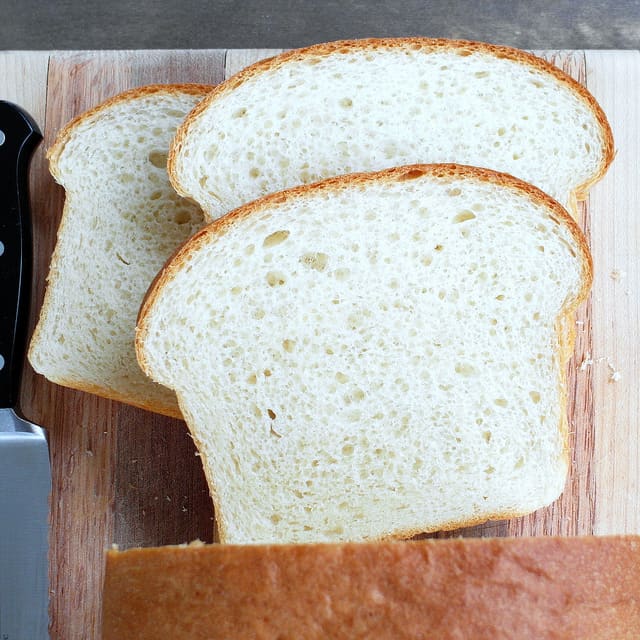
I knew I wanted to play with milk bread, because the subtle sweetness and tenderness that milk brings to bread enhances a sandwich without overpowering the flavors of your Sammich Fixins.
Ingredients
There are no weird or special ingredients in a Tangzhong loaf of bread.
The tangzhong mixture is made by cooking together a portion of the liquid (water and/or milk) with a portion of the flour until the flour gelatinizes. Let that cool and then add that into your dough.
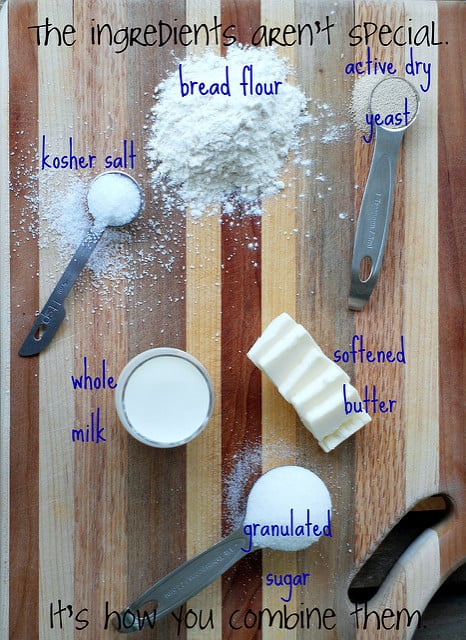
Round 1
For my first trial, I started with a pretty basic pain au lait recipe.
I applied the necessary Mathematical Calculations, deciding rather randomly that my Tangzhong would contain 7% of the total weight of the flour.
I made the Tangzhong with water, substituting it at 1:1 for a portion of the milk. The resulting loaf was quite lovely, but didn’t have the milky sweetness I was looking for.
Plus, The Beloved and I both felt that it was just a smidge bland.
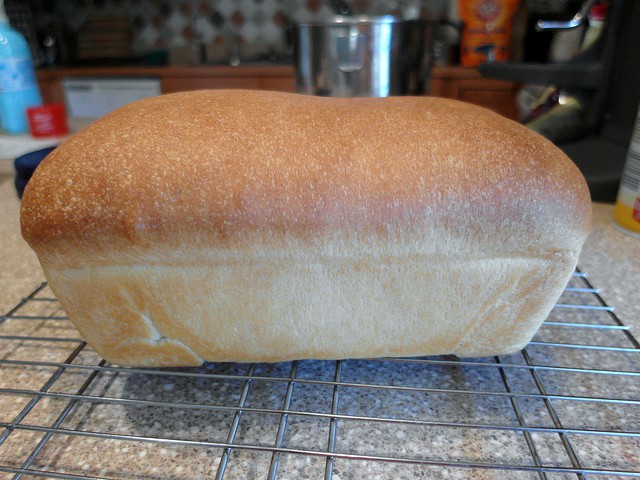
Round 2
For the second round, I used milk for the Tangzhong rather than water, basically figuring, “Why not?”
I also upped the salt by just a smidge. That loaf? Nigh on to Perfect, I have to say.
Since it contained more milk, it browned a bit better than the Round 1 Loaf. There was the merest hint of crisp crackle in the crust that yielded to the milky goodness and tender crumb I’d been seeking.
My perfect sandwich loaf.

Before I get on with the formula for what to me is just about the Perfect Sammich Loaf, let’s talk a bit about how Tangzhong changes your dough so you know what to expect. Also, I found out some other pretty keen information about this technique that I’ll share.
How Does Tangzhong Affect the Dough?
Since you’re inhibiting some of the gluten from forming, in essence you’re working with a dough with an overall lower protein content. And the lower the protein content, the wetter the dough.
High protein flour absorbs more water than low protein flour. This stands to reason since more protein means it needs more water to activate the gluten. And remember, we’ve already made an end run around 5-10% of the gluten by gelatinizing that flour instead.
In short, expect your tangzhong dough to be stickier than standard bread dough.
This type of dough requires a lot more kneading to develop the proteins remaining so your dough stretches the way it needs to. It needs to be kneaded. A lot.
Kneading Time
Stella’s loaf required about one minute of mixing (with the dough hook) on low speed and then a good solid 11-12 minutes of kneading on medium speed.
The first pain au lait version I made required 1 minute of mixing (again with the dough hook on low), about 3 minutes of incorporating the butter and then a solid 18 minutes of kneading. To say that my mixer was hot and cranky would be an understatement of epic proportion.
Following a tip from my friend Amy on twitter, for round two I let the dough rest for thirty minutes before adding the butter.
Then, I kneaded for about 6 minutes, let the dough rest another twenty and then finished up with about 6 more minutes of kneading.
This worked out just fine, and my mixer was slightly mollified.
Stella suggests kneading by hand with an assist from your trusty bench knife or dough scraper, but I am just not brave—or patient enough–for those sorts of shenanigans.
If you’re feeling spunky, by all means go for it, but know that it could literally take an hour.
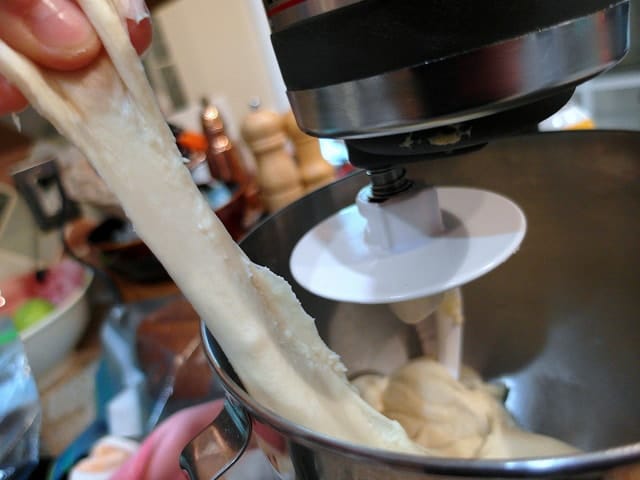
Q & A
Yes. I found reference to rice flour tang zhong and corn flour (corn starch) tangzhong here on Samayalarai: Cooking is Divine. I have not tried either method, but since, in the case of the wheat flour, the gluten is taken out of the equation leaving only gelatinized starches, it is my guess that there would be very little difference in the texture of the end products.
Yes. Jeanine asked this question of me the other day. I was able to find a delightful looking Gluten Free Japanese Milk Bread by Nicole on Gluten Free on a Shoestring through a thread on The Fresh Loaf.
I would say a qualified yes to this if a)the properties that Tangzhong brings (longer keeping, soft and springy texture, overall lower gluten) are what you’re looking for and b)you realize that you might need to do some tweaking of your formulas to get them to turn out the way you want. For instance, when using other flours that naturally contain less (or no) gluten—rye and oat come to mind—further reducing the gluten by binding up some of your wheat flour in a gel might not give you enough lift. Also, as some mixed flour dough tends to be sticky to begin with, you may end up with soup. So again, I give a qualified yes to this one.
Here’s a link to Swathi’s (Zesty South Indian Kitchen) Rye Bread made with Tangzhong post.
Most of what I have read about Tangzhong is pretty specific. 1:5 is it. But, Stella’s formula calls for a cooked flour starter at a 1:2 ratio: 3oz flour and 6oz water. The resulting water roux has the consistency of mashed potatoes whereas Tangzhong is more akin to pancake batter in texture.
There is always more than one way to skin a cat, and I found reference to several water roux type starters at Shoon Yin’s Recipes, all made a bit differently and all with different ratios of flour to water.
Conclusions
I think one of the differences among these Tangzhong-ish methods is the crumb in the final product.
While all of these gelatinized starters bind water and prevent a certain amount of gluten formation, the more flour that is in the starter, the less gluten that is available.
So, Stella’s bread, which binds up 18.46% of the total flour in the formula has a tighter crumb that the bread I made in which 7% of the flour was tied up in the gel.
The next test? Making the Tangzhong with Shoon Yin’s suggested 11-12% of the flour. I will be sure to update this post with my Findings.
Update (yes, already. You’re welcome): I made the same bread using 11% of the flour as the base for the Tangzhong, which in this case was 1.9 oz flour and 9.5 oz milk.
Neither The Beloved nor I could detect any appreciable difference in the two breads, although perhaps the 11% loaf has very slightly more boing to it than does the 7% loaf.
You are free to make either one of course, just subtract the new amounts of flour and milk from a total of 17 oz flour and 12 oz milk.
Other Tangzhong Bread Recipes
Here are a few other recipes from my site and around the web. The Saffron Bread is lovely, and do check out the other recipes too. You’ll see how versatile this method is. Enjoy!
- Cornish Saffron Bread is a sweetly perfumed Easter bread you might enjoy making
- Tangzhong Whole Wheat and Rye Bread A heartier and more complex loaf than my Tangzhong bread
- Cinnamon Currant Tangzhong Bread Perfect for toasting for breakfast or brunch!
- Hokkaido Milk Bread A classic Japanese bread that gets its tenderness and gossamer crumb from the shaping method as well as the Tangzhong
I know that was a Very Ton of information.
If you are supremely interested in this subject, do read the articles and check out the sites that I’ve linked to.
And don’t hesitate to ask questions of me. If I can answer them, I will. If I can’t, I’ll do my best to find the answers for you.
Let’s Make This Guy
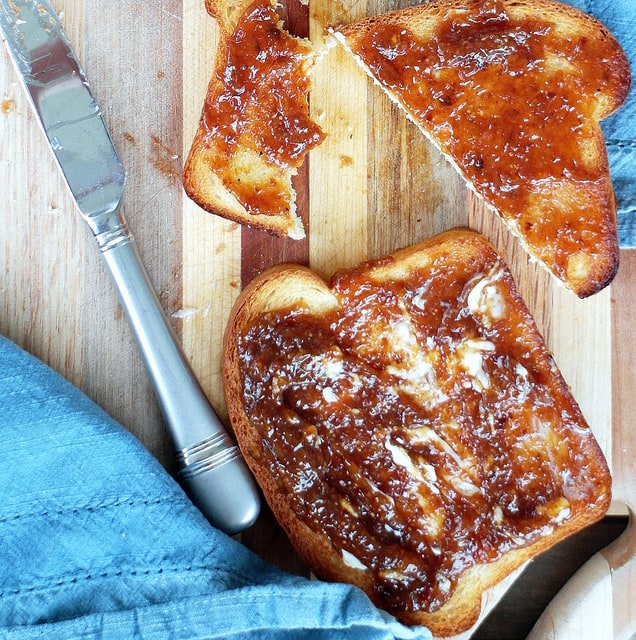
NOTE: Most of my recipes are written by weight and not volume, even the liquids.
Even though I try to provide you with volume measurements as well, I encourage you to buy a kitchen scale for ease of measuring, accuracy, and consistency. Especially for bread since volume measurements of flour can vary widely
This is the scale I use, love, and recommend:
I really hope you love this Tangzhong bread recipe, you guys! If you make it, please share a photo with me, either in the PCO Facebook Group or on instagram by tagging @onlinepastrychef and using hashtag #pcorecipe.
Thanks, and enjoy!
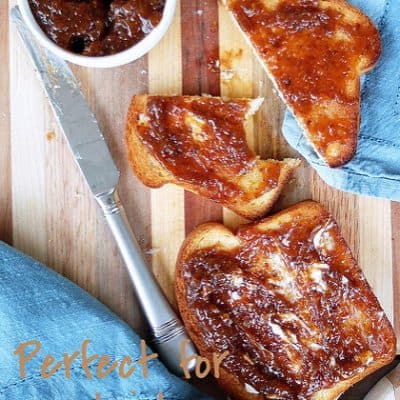
Pain au Lait using Tangzhong method
Classic French Pain au Lait, Tangzhongified for longer keeping qualities and general awesome boinginess. Makes a fantastic sandwich. Makes fantastic toast. It's just all around fantastic.
Ingredients
For the Tangzhong
- 6 oz whole milk
- 1.2 oz bread flour
For the Dough
- All the Tangzhong
- 6 oz . whole milk
- 15.8 oz bread flour
- 4 teaspoons granulated sugar
- 1 1/4 teaspoons active dry yeast, (from a batch of yeast you know is alive and kicking)
- 1 1/8 teaspoon (7 grams) kosher salt (picky, but there you have it), (I used Morton's)
- 3.25 oz butter, , cut into small pieces and allowed to get very soft
Instructions
For the Tangzhong
- Whisk together the flour and milk.
- Once there are no lumps remaining, cook over medium heat, whisking constantly, until the mixture has evenly thickened and is nice and smooth.
- Remove from the heat and...
For the Bread
- pour the 6 oz of milk into the Tangzhong, whisking until smooth. This will lower the temperature so you don't have to wait before continuing.
- To your mixing bowl, add all the tangzhong/milk mixture and all the rest of the ingredients except for the butter.
- With the dough hook, mix on low speed for one minute, or until the dough just comes together. There might be some loose flour in the bowl, but don't worry about it. It will get incorporated in the next step when you add the butter.
- Cover the mixer bowl with a lint-free towel (you can leave the bowl on the mixer) and let rest for 30 minutes. This rest (autolyse) allows some gluten to form before you even start kneading.
- After the rest, turn the mixer on medium-low speed and add the butter in several additions over the course of about three minutes. The dough will be a wreck--sticky, buttery, messy. Worry not.
- Turn the mixer on medium speed and knead for 7 minutes.
- Cover the bowl again and let rest for 20 minutes.
- Remove the towel and knead on medium speed for 7 more minutes.
- Test the dough. It should be somewhat tacky, very extensible (you can stretch it out really easily) and smooth. Check the dough with the windowpane test. If you can stretch out a wee piece of the dough until it is taught and translucent like bubble gum, you're good to go.
This next part is Stella's technique:
- Put a mug of water in the microwave and heat to boiling, about 2 1/2 minutes.
- Scrape the dough out of the mixer bowl, round it so it's nice and smooth on the top (you may have to lightly oil your hands so the dough doesn't stick to you) and put it back in the bowl. Spray with pan spray and cover with a lint-free towel.
- Put the covered dough in the warm and moist microwave--leave the mug of water in there--and let double in size, 45 minutes-an hour.
- Once the dough has doubled, turn it out onto a clean work surface--no flour. Lightly press the dough into a rough 9" square.
- Fold the dough into thirds like a letter. Then, fold it in half--it will seem an impossible task, but just start at one side and sort of push the dough down in the center of your letter fold and pinch the top and bottom edges together. Keep doing this all the way down the length of your dough. Now you will have a fat cylinder of dough about a foot long.
- Roll the dough over (smooth side up) and hold it like a bowed up slinky.
- Fit the dough into a pan-sprayed 9"x5" loaf pan so the slinky's ends are down in the bottom of the pan. Then press the dough down a bit to even it out and allow it to sit snugly in the pan.
- Heat the mug of water for another minute or so, and spray the top of the loaf with pan spray.
- Cover with plastic wrap and place back in the cozy microwave with its little mug friend.
- Go ahead and set a rack in the center of the oven and preheat to 350F.
- Let the rise until it has not quite doubled in size--it will probably rise about an inch or so above the lip of the loaf pan. This will take about 30-45 minutes.
- Once the dough has risen nicely, place in the preheated oven and bake until the loaf is a deep golden brown. It doesn't need any egg wash or anything. The loaf should sound hollow when tapped and the internal temperature will be between 205F and 210F.
- Tip the bread out of the pan and onto a wire rack to cool. Let cool at least an hour if you can. If you can't, I'll understand. Your bread will have a better texture if you let it cool first, though. Hot bread sort of turns to mush in your mouth since the starches need to cool down to about 140F to solidify. Cutting too soon can result in smooshed and smooshy bread.
- Store at room temperature in an airtight container for 3-4 days. For longer storage, pre-slice, wrap well and freeze. Pull out slices as needed and leave the rest frozen.
Notes
Nutritional Information based on 10 slices of bread.
Recommended Products
As an Amazon Associate and member of other affiliate programs, I earn from qualifying purchases.
Nutrition Information
Amount Per Serving Calories 226Saturated Fat 4gCholesterol 19mgSodium 286mgCarbohydrates 32gFiber 1gSugar 2gProtein 6g
Thanks for spending a (large) part of your day with me, and have a lovely day.
The post Tangzhong Bread Recipe | Perfect Pain au Lait Sandwich Bread appeared first on Pastry Chef Online.

